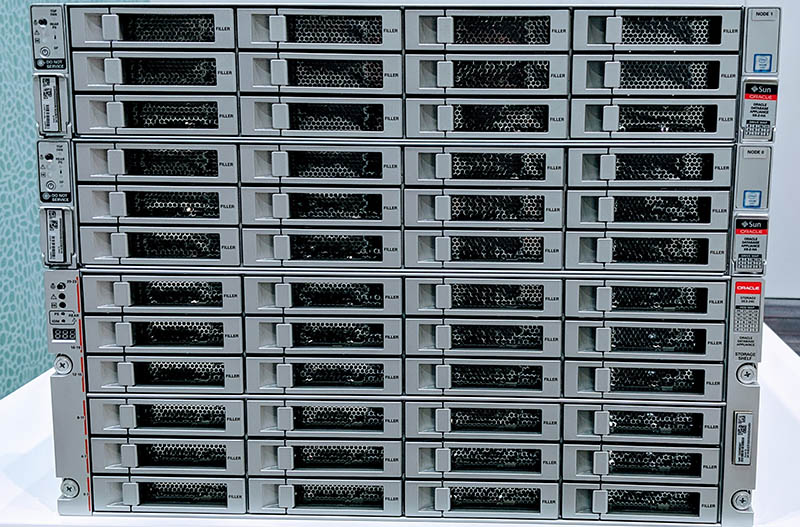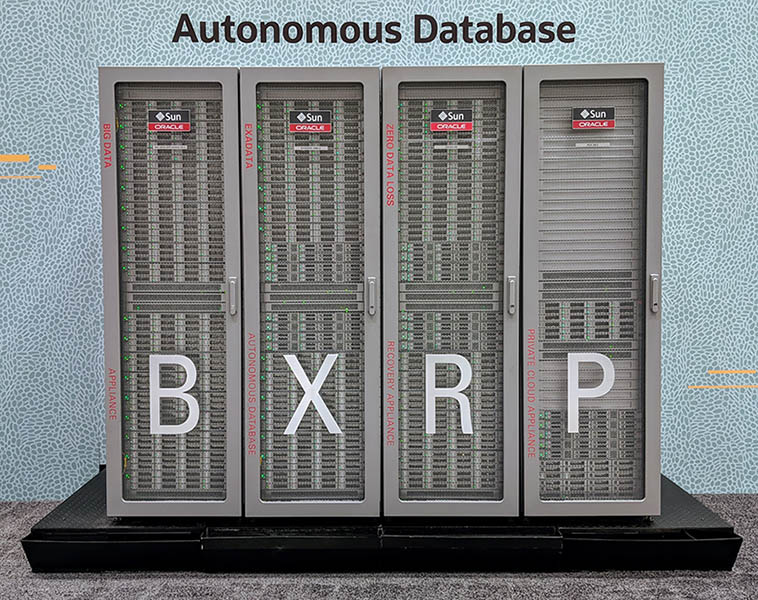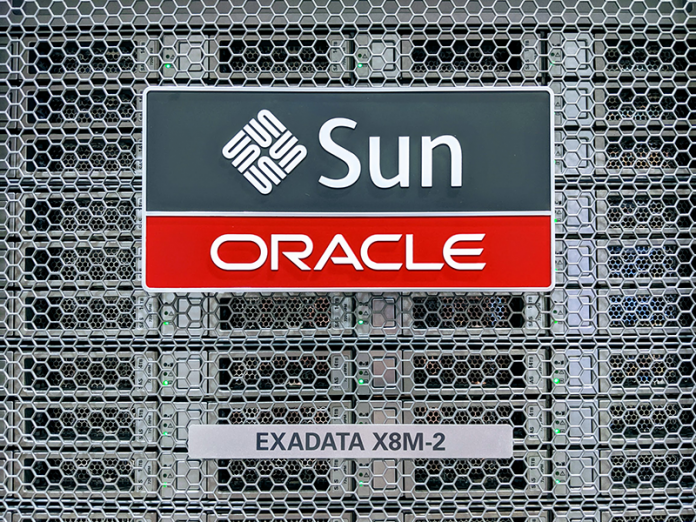At Oracle OpenWorld 2019 we have a major new product announcement for the database administrators on STH. The Oracle Exadata X8M is designed to accelerate Oracle’s database applications as the company looks to add more data analytics and BI features to its platforms.
Oracle Exadata X8M Platform
There are a few key components to the new Oracle Exadata X8M’s performance claims. The systems are using the new 2nd generation Intel Xeon Scalable processors. You can see our in-depth analysis of the new chips in 2nd Gen Intel Xeon Scalable Launch Details and Analysis. One of the biggest features of the new chips is their ability to support Intel Optane DC Persistent Memory.

Beyond the storage, the new system also includes 100GbE and RoCE (RDMA over Converged Ethernet) to help it scale. One of the key challenges with using Intel Optane DCPMM is the requirement to keep data redundant when it is in DIMM slots. A common approach is to rely upon fast networking to replicate data stored on DCPMMs. The Oracle Exadata System Software automatically manages the redundancy and high-availability of data stored on the Optane DCPMMs.
Oracle is claiming 2.5x better performance and 10x lower latency on this generation of the Exadata platform.

The overall Oracle Exadata X8M family fits into the company’s direction of autonomous databases. At Oracle OpenWorld, the company was making a hard push to show how its new autonomous features enable more efficient IT operations and increase an organization’s ability to derive value from their business data.
For Intel, this is a big win as it is a major customer using the Intel Optane DCPMM technology in the data center for a high-margin product. Given Oracle’s importance in the market, it will be a strong marketing vehicle for Intel against AMD.





Why no 200GBe network and just 100GBe ? Also why no twice as fast PCI-E Gen 4 NVMes vs pci-e Gen 3 NVMes ? Both these technologies are subject to improve database velocity and performances, no ?
Cyril, they are using 2nd generation Intel Xeon Scalable CPUs so they do not have PCIe Gen4 and cannot easily support a 200GbE NIC.